Effects of Air-Pulsed Cryotherapy on Neuromuscular Recovery Subsequent to Exercise-Induced Muscle Damage
Résumé
Background: Localized cooling has been proposed as an effective strategy to limit the deleterious effects of exercise-induced muscle damage on neuromuscular function. However, the literature reports conflicting results.
Purpose: This randomized controlled trial aimed to determine the effects of a new treatment, localized air-pulsed cryotherapy (–30°C), on the recovery time-course of neuromuscular function following a strenuous eccentric exercise.
Study Design: Controlled laboratory study.
Methods: A total of 24 participants were included in either a control group (CONT) or a cryotherapy group (CRYO). Immediately after 3 sets of 20 maximal isokinetic eccentric contractions of elbow flexors, and then 1, 2, and 3 days after exercise, the CRYO group received a cryotherapy treatment (3 x 4 minutes at –30°C separated by 1 minute). The day before and 1, 2, 3, 7, and 14 days after exercise, several parameters were quantified: maximal isometric torque and its associated maximal electromyographic activity recorded by a 64-channel electrode, delayed-onset muscle soreness (DOMS), biceps brachii transverse relaxation time (T2) measured using magnetic resonance imaging, creatine kinase activity, interleukin-6, and C-reactive protein.
Results: Maximal isometric torque decreased similarly for the CONT (–33% ± 4%) and CRYO groups (–31% ± 6%). No intergroup differences were found for DOMS, electromyographic activity, creatine kinase activity, and T2 level averaged across the whole biceps brachii. C-reactive protein significantly increased for CONT (+93% at 72 hours, P<.05) but not for CRYO. Spatial analysis showed that cryotherapy delayed the significant increase f T2 and the decrease of electromyographic activity level for CRYO compared with CONT (between day 1 and day 3) in the medio-distal part of the biceps brachii.
Conclusion: Although some indicators of muscle damage after severe eccentric exercise were delayed (ie, local formation of edema and decrease of muscle activity) by repeated air-pulsed cryotherapy, we provide evidence that this cooling procedure failed to improve long-term recovery of muscle performance.
Clinical Relevance: Four applications of air-pulsed cryotherapy in the 3 days after a strenuous eccentric exercise are ineffective overall in promoting long-term muscle recovery. Further studies taking into account the amount of exercise-induced muscle damage would allow investigators to make stronger conclusions regarding the inefficiency of this recovery modality.
